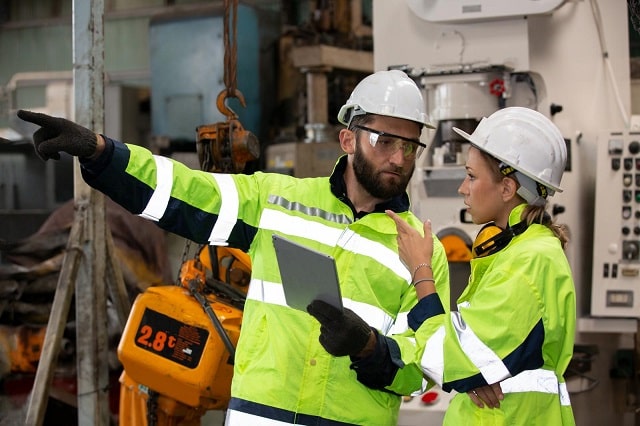The 6 Most Important Objectives of Maintenance Management


Maintenance management involves prioritizing maintenance work as a means for improving site performance. This requires a detailed inventory and assessment of a company’s assets to create specific plans that can improve asset lifetime and efficiency.
When it comes to the objectives of maintenance management, many businesses face significant challenges in developing their maintenance goals due to the potential complexity of their operations and lack of the right tools.
To achieve their maintenance goals, many companies are adopting sophisticated software platforms such as Computerized Maintenance Management Systems (CMMS) and an Enterprise Asset Management (EAM) software system. These software programs allow the company to create a detailed history for each asset and ensure accurate documentation of all maintenance activities, repairs, replacements, and other data when integrated with an asset tagging system.
Asset tags and barcode labels such as maintenance management asset tags, industrial use barcode labels, equipment labels, and inventory tags enable facilities managers to track every asset and gain better visibility into their operation and maintenance processes.
In this post, we’ll explore the topic of maintenance management in detail and review six of the most important objectives of maintenance management you should work to achieve. Many of these objectives are fundamental to running a successful facility operation and can be used to define your own program or maintenance objectives.
With proper planning, it’s possible to create a reliable work environment that adds significant value and profitability to the company.

One of the most obvious objectives of maintenance management is controlling the costs of operating a facility. This can be done by combining multiple styles of maintenance, such as predictive and preventive maintenance, to optimize the efficiency of each asset.
Preventive maintenance is an especially important effort in controlling costs given that it reduces unexpected breakdowns and costly emergency repairs.
According to Statista, “It is projected that the revenue of repair and maintenance in the U.S. will amount to approximately 191.4 billion U.S. Dollars by 2024.” (source) This statistic highlights the growing importance and investment in maintenance management and cost control.
Costs can also be reduced by optimizing spare parts inventories and maintaining accurate budget forecasts. It’s also important to estimate future maintenance expenditures and develop proactive plans to care for equipment.
Facility decisions should be based on a review of local data and insights learned over time. Any efforts to improve operations can ultimately have an impact on controlling costs and should be prioritized when possible.
With proper maintenance, common equipment issues can be prevented by taking proactive steps to monitor component wear and regularly replace consumable parts. Maintenance management can reduce equipment failures and unplanned downtime while ensuring that equipment utilization is maximized.
Work stoppages can be extremely disruptive to productivity and should be avoided at all costs.
A company depends on its assets, and any performance issues could have a significant impact on warehouse, factory, or office operations. Regular maintenance helps to minimize the effects of wear and tear on frequently used components.
Preventive steps can also be taken to perform calibrations and make adjustments that keep equipment performing in optimal working order. The use of maintenance management procedures can have a dramatic effect in complex environments where several pieces of machinery are working together to support business processes.
A failure at any point in the system can bring the entire workflow to a halt.

Another important objective of maintenance management is ensuring that all equipment on site is available and ready for use. Certain hardware, such as personal protective equipment (PPE) and safety gear, is often used only when there is a specific situation that requires action.
Reliability-Centered Maintenance (RCM) is a systematic approach that helps identify the most effective and efficient preventive maintenance tasks to maintain the inherent reliability of equipment. By using RCM to develop a preventive maintenance schedule, companies can help ensure their critical assets are available when needed
It’s important for companies to develop strong training protocols to keep employees informed while preparing the proper maintenance checks and inspections to review equipment performance and ensure the availability of inventory and assets.
Most businesses operating today must conform to some level of local, state, or federal regulatory guidelines. In some industries, such as aerospace and defense, the requirements can be extensive and require a high degree of diligence to remain in compliance.
Maintenance planning can include the use of regular inspections, audit preparations, documentation, and asset inventories. These preparations ultimately help reduce the likelihood of accidents and situations that may jeopardize a company’s compliance standing.
Most companies today track a series of metrics, or key performance indicators (KPIs), to ensure that everything is running according to the plan. If maintenance management is performed correctly, it should have a positive impact on many of these measurements including equipment utilization and inventory accuracy.
Facility managers responsible for multiple locations must also take care to align local maintenance priorities with the objectives of each site. To stay on top of all your maintenance activities, check out our facility maintenance checklist.
Maintenance management can have a dramatic impact on a facility. Equipment must be reliable and always kept in good working order to meet operations and production goals. Ultimately, the objectives of maintenance management are to help each facility achieve its highest level of performance.
The key objectives of maintenance management include:
Maintenance management software, or CMMS, can support the achievement of these objectives in several ways:
Preventive maintenance focuses on regularly scheduled inspections and servicing to prevent equipment failures, whereas reactive maintenance only addresses issues after they occur. The key benefits of preventive maintenance include:
Maintenance management plays a critical role in supporting broader business objectives like profitability, competitiveness, and operational excellence. By keeping assets running efficiently, minimizing downtime, and controlling costs, maintenance contributes directly to the organization’s bottom line and ability to meet customer demands. It also helps protect the company’s investment in its physical infrastructure and equipment.
Our sales engineers are experts in automatic asset tracking, tagging and identification,a nd can answer all your questions. Get in touch now.
Lets Talk ›Enter your information and get a free checklist of the top questions to answer to plan a successful asset tagging project for any maintenance tracking or facility management system.